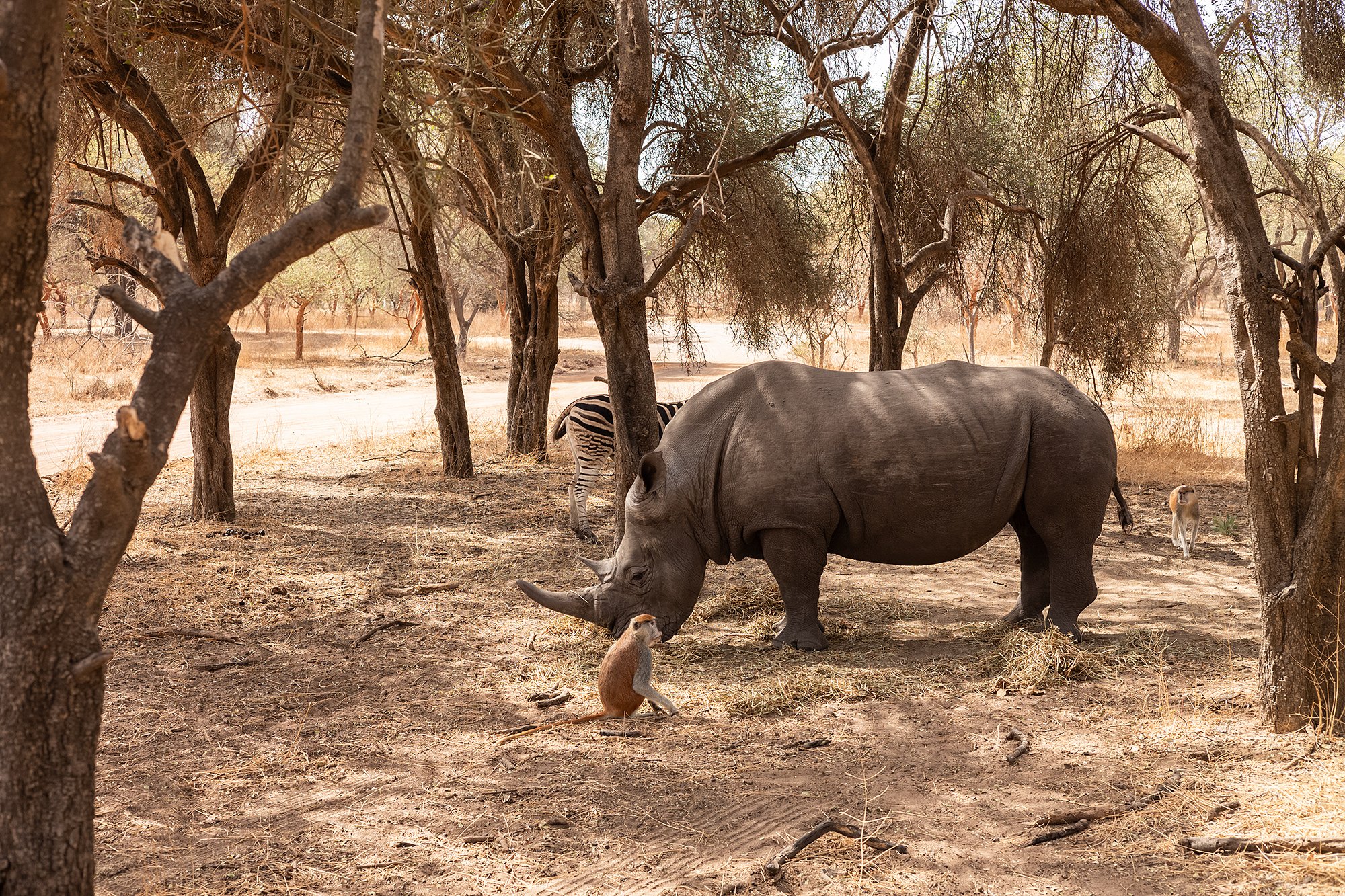
Senegal chapter 7
A visit to the Bandia Reserve and the road back to Dakar.
It’s the last day of our trip and the Italians have a flight booked home. Unfortunately it’s been delayed and their original early afternoon departure has been pushed to late in the evening.
It gives us more time to conclude our activities, but we don’t necessarily need it. Amadou tells them that after our morning excursion to the Bandia wildlife refuge he’ll bring them back to Saly and find a place for them for lunch and to hang out for the afternoon before Saliou returns to take them to the airport. I half consider asking Amadou if I can join them; spend the afternoon at the beach and then head back home to Dakar, but I am already missing my apartment there and am eager to settle in for the month. I am still wondering where the nearest, best grocery store is.
I check out of my guesthouse and join the Italians for breakfast at the hotel: bread, a fried egg, jam. Amadou meets us and we pile our luggage one last time into the van. Saliou drives us out to the Bandia Reserve where Amadou arranges a jeep tour for us.
As a reserve, it’s not a completely wild safari park. The only animals in the park are herbivores and some have been brought from other parts of Africa. There are a few hyenas in the park, but they live in a zoo-like enclosure. Another enclosure contains giant tortoises. Monkeys and monkeybread gaze at us from the trees.
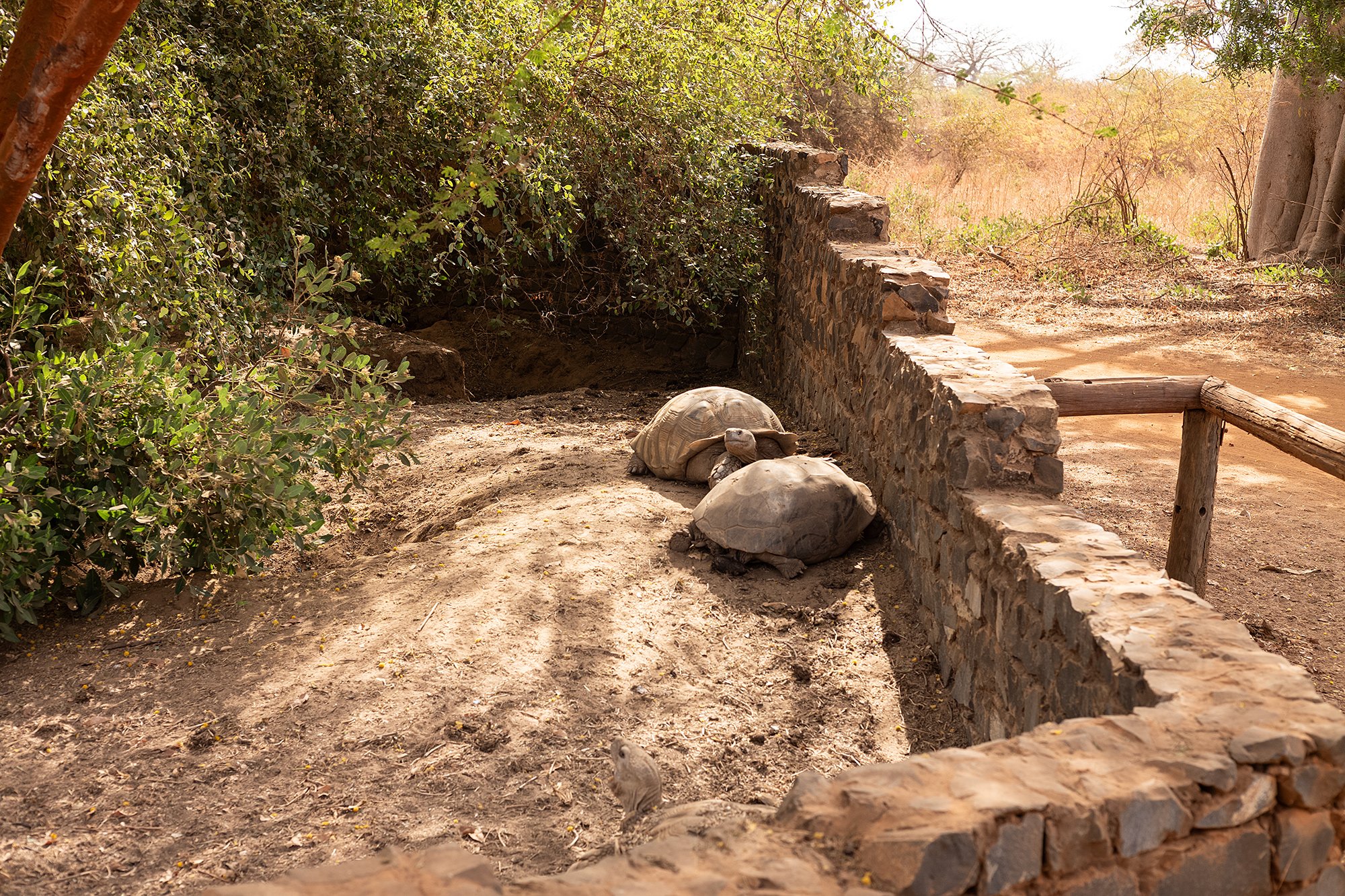
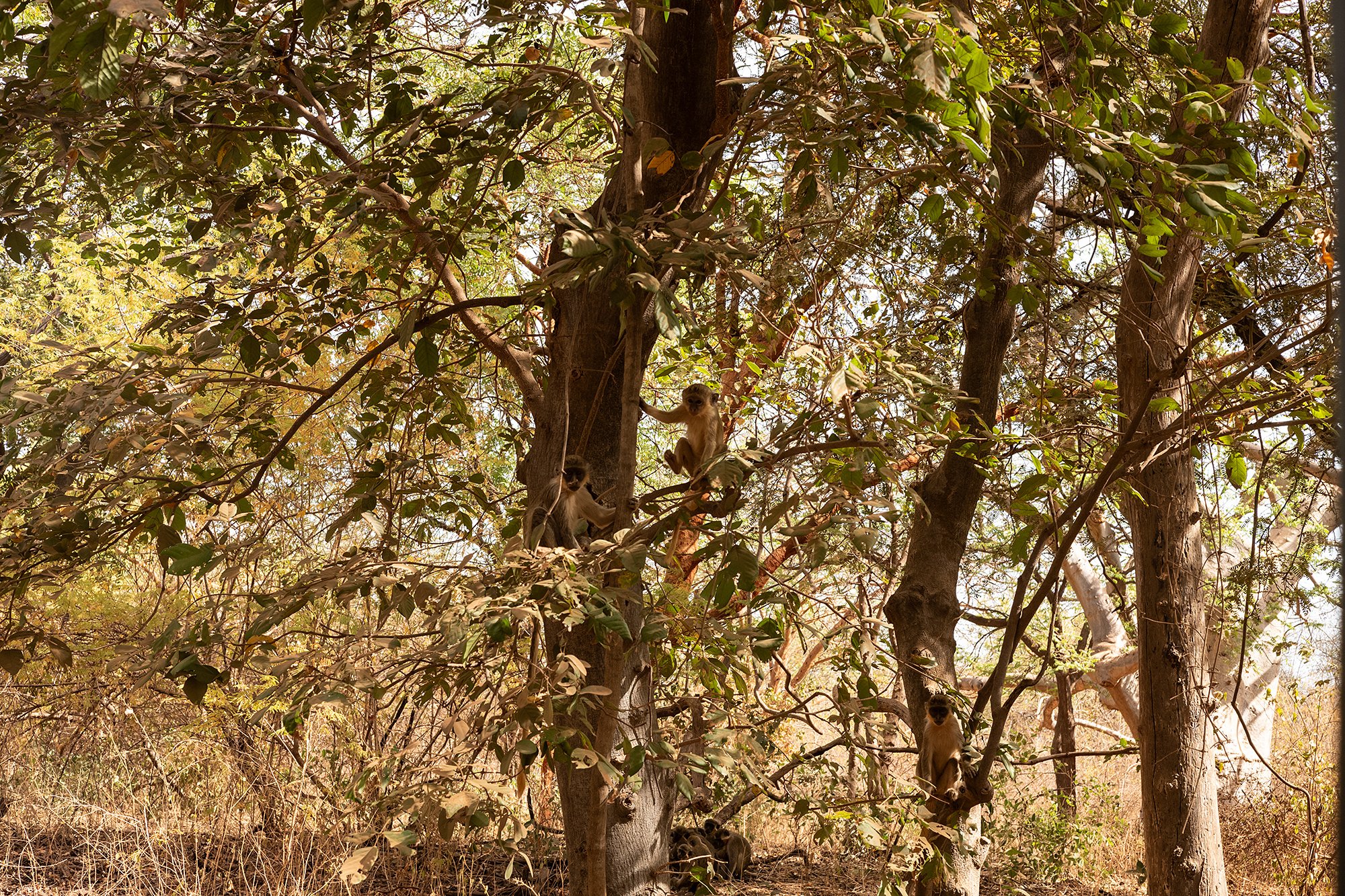

We climb onto an open jeep for the drive around the park. Our first sighting is a tower of giraffes. They take a break from their feeding to look at us as we look upon them. They’re unpreturbed, standing before us, tails lightly swinging behind them.

We drive further and soon spot ostritch and monkeys and a journey of giraffes lounging on the ground. I don’t think I’ve ever seen giraffes lying on the ground in the wild and, free from predators, I surmise they’ve grown to feel safe in the reserve.
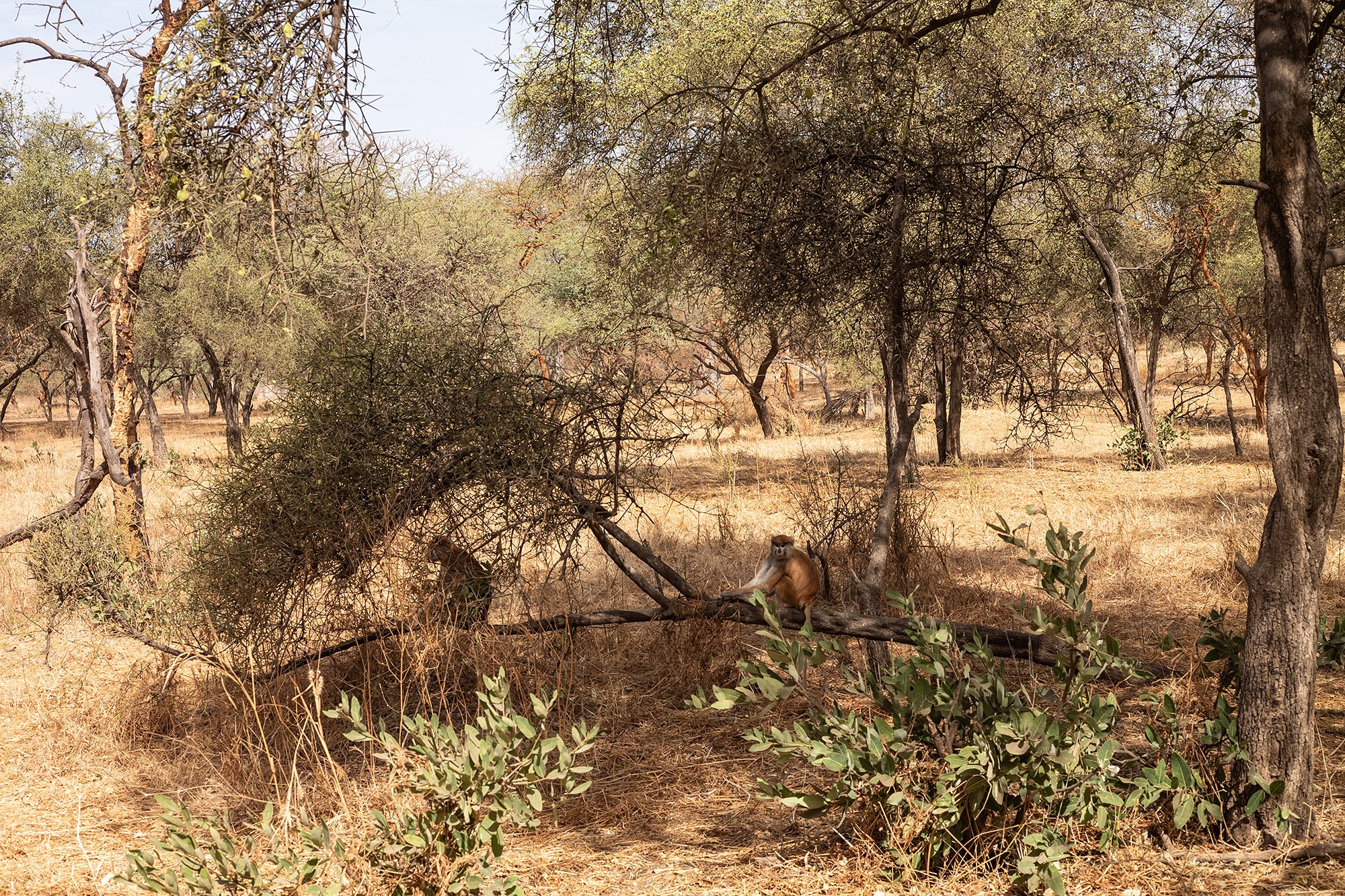
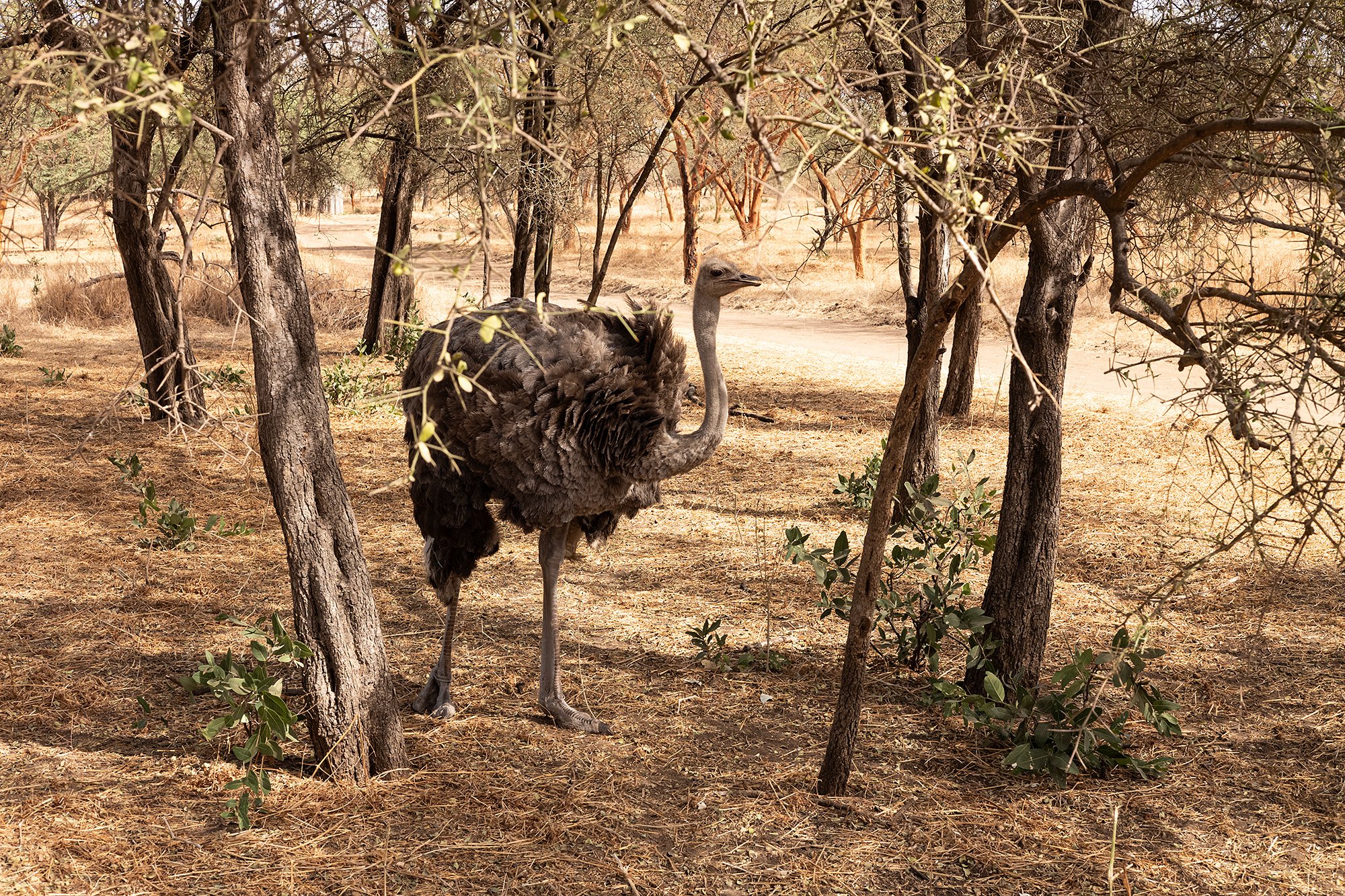

We pause to alight from the vehicle at a large baobab tree. The guide tells us it was once a burial ground and points out some skull fragments that still sit within the base. He helps the Italians take photos of each other and then we are once again back in the car and off to explore.

A small dazzle of zebra came into view, babies in their midst. We paused for photos and watched as they eyed us warily before they rose to move on.
We drove by a small pond where eland lapped at the water before taking their leave and then found the two white rhino that belong to the park. They were feeding beside some zebra. Monkeys hovered nearby hoping to grab some food for themselves.
Brought from South Africa, the rhinos are a male and female, but the guide tells us they don’t like each other so there’s no hope for breeding. And in fact, one grazed away from the other, finding their own pile of feed.





We are left back at the entrance and Amadou takes us to a crocodile pond. They sun themsleves on the shore by the restaurant, mouths open to regulate their temperature. Overhead, a monkey peers down at the scene. I take a photo, hoping he won’t pee on me while I’m below him.


Back in Saly, we say our goodbyes. While they gather their bags and Amadou secures them a spot near the beach, I walk the beach to the water to let the waves wash over my feet. It’s my first contact of the year with the ocean.
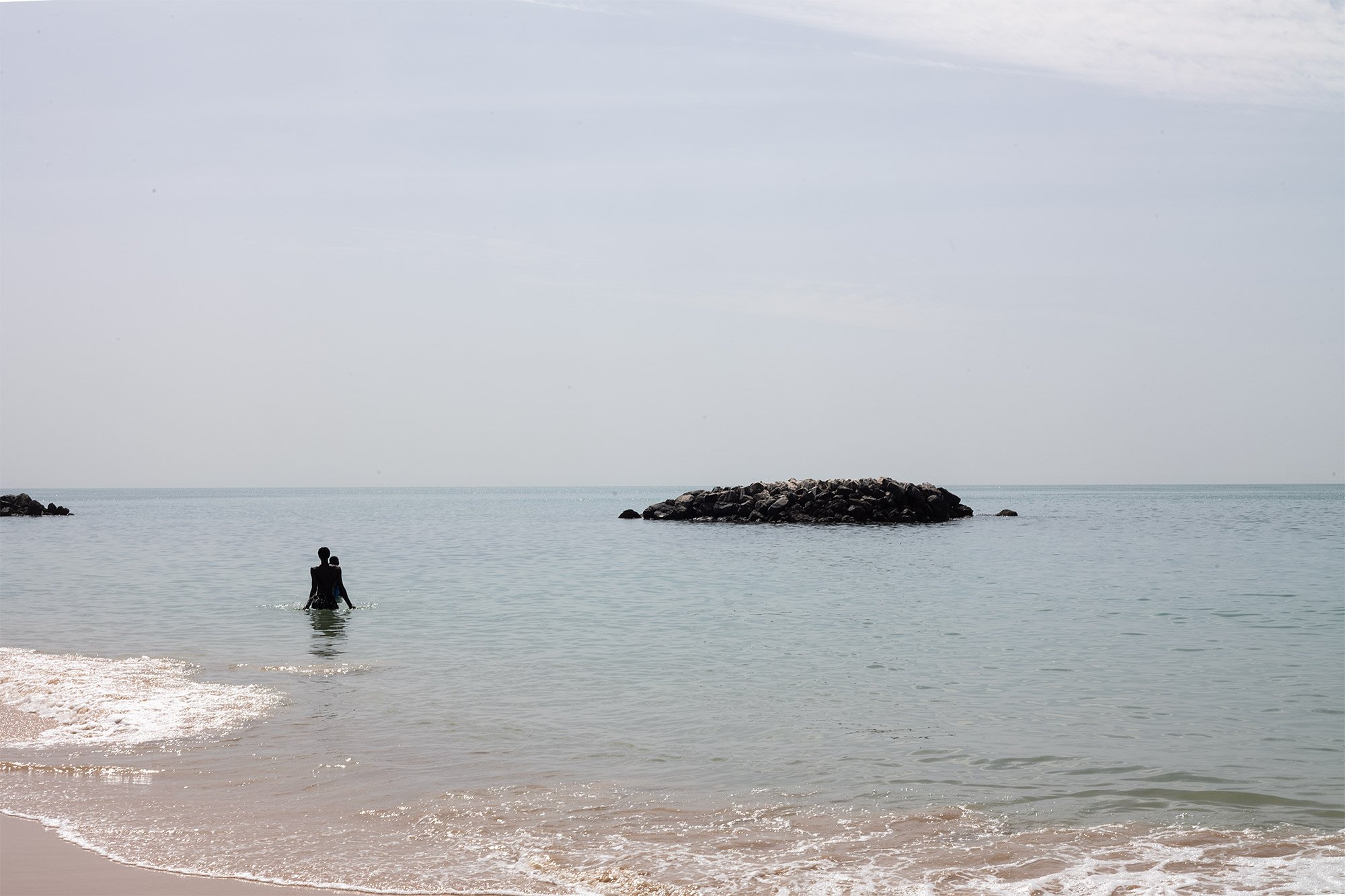
We drive north back to Dakar, the roads unfamiliar until they are. As we get closer to the city and then approach my neighborhood, I begin to recognize landmarks: stores, roundabouts, street art. Before I know it we are back at my building. I am happy to see its grey façade at the end of a road, walk the sandy ground before it. I say goodbye to Saliou and arrange a time to meet Amadou that night. We have tickets to see Youssou N’Dour at the Place du Souvenir Africain on the coast. He tells me he’ll pick me up at seven. The concert is listed at nine on the ticket. I tell him I’ll see him then.

We arrive at eight; the doors open at nine. People are dressed to the nines. I am very under-dressed. Seating is open and we find a great spot in the front row of an elevated section running along part of the stage.
The outdoor venue fills slowly. Screens on stage show a traditional wrestling match that’s going on at a nearby stadium. When the local hero wins the venue erupts. People stand and scream and stomp their feet. Amadou explains the significance of the match and the atheletes to me.
The show starts at midnight. Youssou appears from the back of the venue in traditional garb, walking through the crowd to the stage. His musicians are seated in a circle. He enters and sings. After a few quiter songs the musicians walk down a runway to the main stage and Youssou follows them, disappearing backstage before emerging in a white suit. Then the drums and fireworks hit and the energy spikes.
He punctuates his performance with calls of “Vous êtes fatigué!?” to which the audience shouts out “NON!” It’s a spirited performance, the music driven by a mass of drums. Amadou tells me that when he plays in Europe he brings only a few drums with him, but in Africa he brings them all.
At 02:30 Youssou calls out again. “Vous êtes fatigué!?” The responses have grown slightly less energetic as the night wears on. Amadou suggests we head out to avoid the crowd. When the show is over it’ll be hard to get a cab. I acquiese. The show shows no signs of stopping. It’s a glorious start to the new year.
A week later I run into the host of my Air BnB. Her daughters had seen his second show on the 6th. I ask him what time they got home. Four am and five am, she tells me. Vous êtes fatigué? Oui.
1 January 2024
🇸🇳










